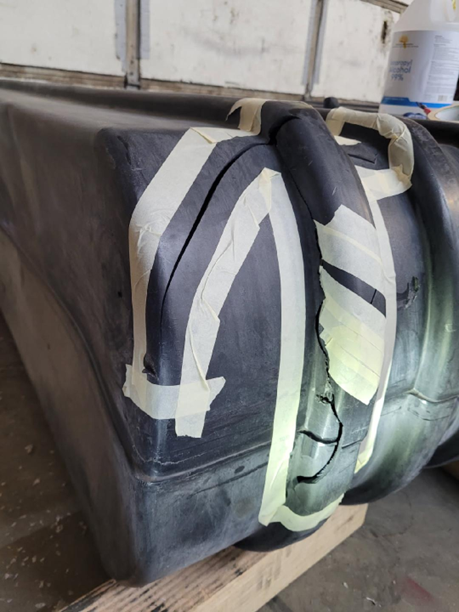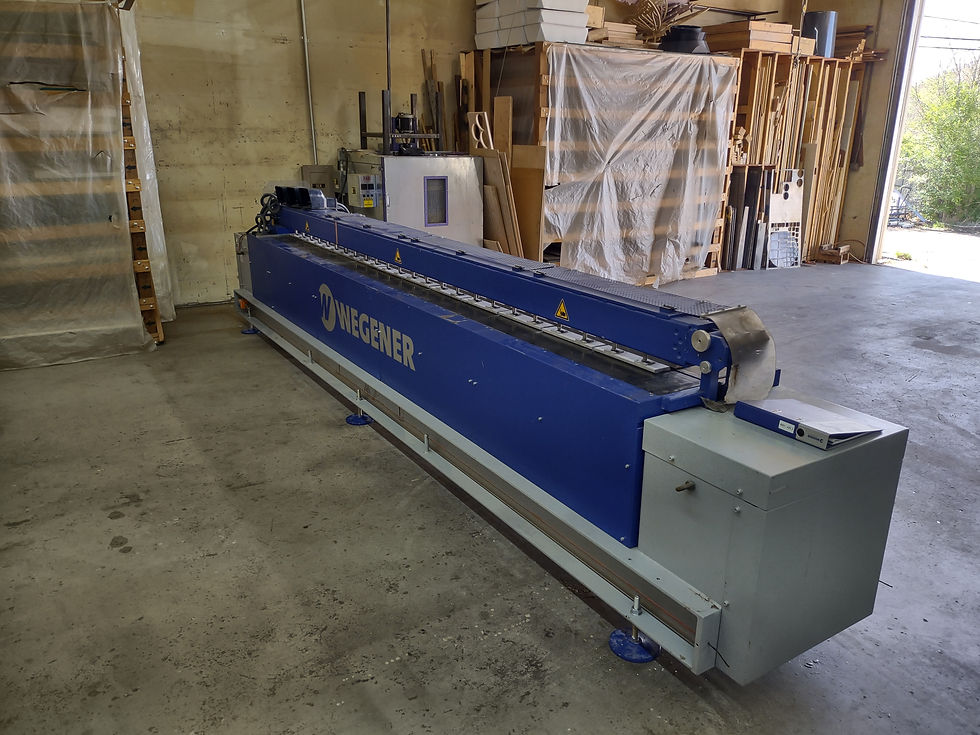The Advantages of Thermoplastic Polymers Over Traditional Building Materials
- alex71632
- Jul 2, 2025
- 5 min read
In the world of construction and manufacturing, the materials we rely on are rapidly evolving. For centuries, metal, concrete, and wood have dominated the landscape as the primary building materials. However, the emergence of advanced thermoplastic polymers has rewritten the rules, offering compelling benefits that go beyond what traditional materials can deliver. From longer serviceable life to reduced maintenance demands, thermoplastic polymers are fast becoming the go-to choice for modern construction, infrastructure, and industrial applications.
Understanding Thermoplastic Polymers
Thermoplastic polymers are a class of plastics that, unlike thermosetting plastics, can be heated and reshaped multiple times without significant degradation. Common examples include polyethylene (PE), polyvinyl chloride (PVC), polypropylene (PP), and polycarbonate (PC). Their unique chemistry grants them an array of mechanical, thermal, and chemical properties, making them versatile for a wide variety of uses.
Advantages Over Metals and Traditional Materials
1. Superior Corrosion Resistance
One of the most significant limitations of metals, especially in harsh environments, is their susceptibility to corrosion. Steel, iron, and even aluminum—all stalwarts of the construction industry—can be compromised by moisture, salt, acids, and other environmental factors. Corrosion leads to structural weakness, safety hazards, and frequent, costly maintenance.
Thermoplastic polymers are inherently resistant to corrosion. Whether exposed to water, salty air, or caustic chemicals, they do not rust or degrade in the same way metals do. Pipes, roofing, and façade elements made from thermoplastics can last decades without succumbing to the ravages of oxidation.
2. Extended Serviceable Life
The longevity of a building material is a crucial factor in its selection. Metal, wood, and concrete can all deteriorate over time—metals corrode, wood rots or is eaten by insects, and concrete can crack or spall. Thermoplastic polymers, on the other hand, often outlast their traditional counterparts, particularly in environments where exposure to moisture, chemicals, and UV radiation is common.
For example, PVC piping can serve reliably for 50 years or more underground or exposed to water, whereas metal pipes may require replacement every 20-30 years due to corrosion. Polycarbonate panels in greenhouses or architectural glazing maintain their clarity and strength for decades, even under constant sunlight, due to built-in UV stabilizers.
3. Reduced Maintenance Requirements
Traditional materials frequently demand ongoing maintenance to preserve their appearance and structural integrity. Metal must be painted or coated to prevent rust. Wood needs sealing and is susceptible to warping or insect damage. Even concrete can require crack repairs and sealing.
Thermoplastics, in contrast, require minimal maintenance:
· No painting, sealing, or rust-proofing necessary
· Simple cleaning with water or mild detergents
· Resistant to mold, mildew, and insect attack
· Stable colors and surfaces even after years of exposure
This translates to lower lifetime costs, fewer labor hours, and less downtime for repairs or refurbishment.
4. Lightweight and Easy to Work With
Metals are heavy and often require complex machinery for installation. Concrete and masonry are labor-intensive and demand significant structural support. In contrast, thermoplastic polymers are remarkably lightweight. This attribute brings multiple benefits:
· Reduced transportation costs and environmental impact
· Faster, safer installation—often by a smaller crew
· Lower structural loads, allowing for innovative architectural designs
· Ease of onsite modification with simple tools
These advantages are especially valuable in remote locations, retrofitting projects, or situations where speed and flexibility are crucial.
5. Design Flexibility and Aesthetics
Thermoplastics can be extruded, molded, or thermoformed into nearly any shape. They accept a broad range of colors, textures, and finishes, enabling architects and engineers to realize designs that would be difficult or impossible with metal or concrete. Whether translucent panels, intricate lattice screens, or brightly colored facades, thermoplastics make it possible.
6. Energy Efficiency
Traditional building materials can act as thermal bridges, allowing heat to pass through and reducing the energy efficiency of a structure. Many thermoplastic polymers, on the other hand, are excellent insulators. For example, expanded polystyrene (EPS) and extruded polystyrene (XPS) are widely used as insulation in walls and roofs. Polycarbonate and acrylic panels admit natural light while providing thermal comfort, reducing reliance on artificial lighting and climate control.
7. Sustainability and Recyclability
Modern thermoplastic polymers are increasingly being designed with sustainability in mind. Many are recyclable, either back into similar products or for use in other industries. Compared to metals, which require energy-intensive extraction and processing, thermoplastics can be manufactured with lower carbon footprints, especially when produced from renewable or recycled feedstocks.
8. Chemical Resistance and Hygiene
In settings where hygiene is paramount—hospitals, laboratories, food processing plants—thermoplastics outshine metal and wood. They resist staining, do not absorb moisture, and inhibit the growth of bacteria and mold. Their smooth, non-porous surfaces are easy to sanitize and are compatible with a wide range of cleaning agents.
9. Safety and Impact Resistance
Polycarbonate, a common thermoplastic, is renowned for its toughness and impact resistance. Unlike glass or brittle metals, it does not shatter, making it ideal for safety glazing, protective barriers, and transparent roofing. Many thermoplastics are also inherently fire-retardant or can be formulated to meet strict building codes.
Case Studies: Thermoplastic Polymers in Action
Infrastructure and Piping
Municipal water and sewer systems increasingly use PVC and HDPE pipes. These pipes are not only corrosion-resistant but can flex with ground movement, reducing failure rates during earthquakes or freeze-thaw cycles. Their service life routinely exceeds 50 years with little maintenance, compared to 25-40 years for traditional metal pipes.
Architectural Panels and Roofing
Polycarbonate and acrylic panels have become staples in modern architecture, providing lightweight, shatter-resistant, and UV-stable alternatives to glass or metal. These panels require minimal cleaning and maintain their structural integrity and appearance for decades.
Decking and Outdoor Structures
Composite lumber, made from recycled thermoplastics and wood fibers, offers an alternative to traditional wood decking. It does not rot, splinter, or require sealing, delivering a longer service life with almost no maintenance.
Addressing Common Concerns
Environmental Impact
Critics often cite plastic pollution as a disadvantage of thermoplastics. However, responsible sourcing, increased recycling, and advances in biodegradable plastics are reducing this impact. Moreover, the extended service life and reduced maintenance of thermoplastic products help offset their environmental footprint compared to more resource-intensive traditional materials.
Strength and Structural Use
While thermoplastics do not always match the raw strength of steel or concrete, ongoing innovations in polymer chemistry—such as fiber-reinforced plastics and high-performance composites—are closing this gap. For many applications, especially where flexibility, corrosion resistance, or weight savings matter most, thermoplastics excel.
Conclusion: Building the Future with Thermoplastic Polymers
Thermoplastic polymers are redefining construction and manufacturing. Their advantages—exceptional durability, low maintenance, design versatility, and sustainability—make them superior to metals or other traditional building materials in many contexts. With innovations in recycling and material science, thermoplastics are poised to play an even greater role in creating safe, efficient, and beautiful built environments.
As architects, engineers, and builders seek materials that offer long serviceable life, minimal maintenance, and unmatched performance, the smart choice is clear: thermoplastic polymers are not just a modern alternative, but a superior solution for the challenges of today and tomorrow.




Comments